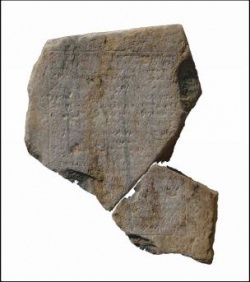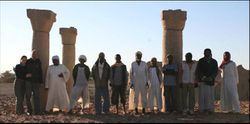Sai


Sai Island
Sai, the second largest island on the Nile, is situated approximately 600 km north of the Sudanese capital Khartoum and 200 km south of the border between Sudan and Egypt. Sai has thus a strategic position on the river between Egypt and the Mediterranean world to the north and Sudan and the African heartlands to the south. This location has made the island an important centre since the Bronze Age (2500-1500 BCE), when one of the earliest chiefdoms on the African continent was founded on the island, until today that Sai is the core area of the Sukkot, a Nubian-speaking sub-tribe. The monumental heritage of the island bespeaks of its importance through time: the Bronze Age tumuli, a Pharaonic temple, Meroitic pyramids, the columns of the so-called Cathedral of Sai, and the fortress of the Ottomans that was built on the ruins of their Christian and Pharaonic predecessors.
The Greek-Norwegian Mission
Sai Island belongs to the archaeological concession of the French University Charles de Gaulle, Lille 3. The Greek- Norwegian Mission (GNM) to the Sudan is an independent archaeological mission although working under the auspices of the French mission to Sai and the National Corporation of Antiquities and Museums in Sudan. Our activities started in 2008 with general bibliographical research on the Medieval Period on Sai. The first field season took place in January and February 2009. It focused on a thorough archaeological survey of the island, which produced the first comprehensive map of sites from the Medieval and post- Medieval centuries of Sai (c. 500-1800 CE). Furthermore, we made a catalogue of all the medieval objects already uncovered on the island and stored in the dig-house of the French Mission. This has already resulted in the publication of all the known Christian grave stelae of the island with the revelation of two hitherto unknown medieval bishops of Sai. The second field season took place in January and February 2010. Then the epigraphic survey culminated by the recording of very interesting graffiti carved on a cliff overlooking the Nile immediately north of the fortress. On the site, GNM discovered remains of buoys for mooring boats and ships at levels of both high and low waters of the river. This identifies the site as one of the ports of the inhabitants of the island during the Middle Ages, and the graffiti seem to be associated with river and port activities. The main focus of the season, however, was the beginning of excavations of the site with the granite columns, which has been suggested as the locality of the Medieval Cathedral of Sai – since we know from historical sources that there was a bishopric on Sai. This site is actually the main target of the Medieval Sai Project of the GNM. The excavations at the so-called Cathedral site started in 2010 and will continue until 2014.
Protection and Promotion of the site
An archaeological project involves inevitably landscape formation, since excavations at any site cause an irreversible alteration to the environment. The presence of a thriving local community does not excuse attitudes of antiquarian collection methods of the past. Rather it demands a sincere commitment to promoting the community’s interests. In terms of archaeological contribution, this signifies the preparation of a monument as an archaeological site meaningful for both local and foreign visitors. Especially in an area like Nubia, this demand becomes even more acute, since the people of Sai as well as its cultural heritage and natural landscape are threatened by obliteration: Sudan is currently experiencing a period of rapid development, and there are plans for constructing a dam on the Dal cataract just downstream of Sai that will submerge the wide floodplains of the island, where both the present and the past populations made their living.